Volume 78, Issue 1
Displaying 1-14 of 14 articles from this issue
- |<
- <
- 1
- >
- >|
-
1987 Volume 78 Issue 1 Pages 1-10
Published: 1987
Released on J-STAGE: March 17, 2008
Download PDF (636K) -
1987 Volume 78 Issue 1 Pages 11-15
Published: 1987
Released on J-STAGE: March 17, 2008
Download PDF (352K) -
1987 Volume 78 Issue 1 Pages 16-19
Published: 1987
Released on J-STAGE: March 17, 2008
Download PDF (254K) -
1987 Volume 78 Issue 1 Pages 21-26
Published: 1987
Released on J-STAGE: March 17, 2008
Download PDF (431K) -
1987 Volume 78 Issue 1 Pages 27-31
Published: 1987
Released on J-STAGE: March 17, 2008
Download PDF (398K) -
1987 Volume 78 Issue 1 Pages 32-39
Published: 1987
Released on J-STAGE: March 17, 2008
Download PDF (593K) -
1987 Volume 78 Issue 1 Pages 40-44
Published: 1987
Released on J-STAGE: March 17, 2008
Download PDF (335K) -
1987 Volume 78 Issue 1 Pages 45-53
Published: 1987
Released on J-STAGE: March 17, 2008
Download PDF (639K) -
1987 Volume 78 Issue 1 Pages 54-62
Published: 1987
Released on J-STAGE: March 17, 2008
Download PDF (875K) -
1987 Volume 78 Issue 1 Pages 63-67
Published: 1987
Released on J-STAGE: March 17, 2008
Download PDF (334K) -
1987 Volume 78 Issue 1 Pages 68-73
Published: 1987
Released on J-STAGE: March 17, 2008
Download PDF (478K) -
1987 Volume 78 Issue 1 Pages 74-79
Published: 1987
Released on J-STAGE: March 17, 2008
Download PDF (422K) -
1987 Volume 78 Issue 1 Pages 80-86
Published: 1987
Released on J-STAGE: March 17, 2008
Download PDF (550K) -
1987 Volume 78 Issue 1 Pages 87-92
Published: 1987
Released on J-STAGE: March 17, 2008
Download PDF (383K)
- |<
- <
- 1
- >
- >|
